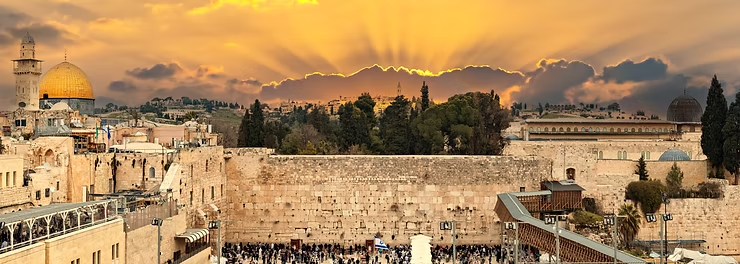Strange Days
- D.I.Hennessey

- Jan 27, 2024
- 4 min read

The Day with No News…

On the evening of April 18, 1930, BBC News reported – presumably for the only time in history -- that there was nothing to report. When it came time for the regular 15-minute news segment at 8:45 p.m., the announcer simply said, “There is no news.” The remainder of the 15 minutes was filled with piano music.
In hindsight, there actually were things going on in the world at that time, including a massive typhoon in the Philippines and events in Europe and Russia that were slowly escalating toward WWII. 80 British soldiers were killed in an uprising by Communist rebels in Chittagong, India, on that day. Yet the slow-moving news of the day didn’t arrive in time for the evening news report.
As a result, the so-called news of the day reported nothing, and everyone listening remained ignorant of these events. It appeared to them as if nothing was happening.
The Darkest Day of the American Revolution…
The Continental Army suffered many dark days early in the Revolutionary War, including brutal defeats in Boston and New York and a deadly frigid winter in Valley Forge. Yet, the darkest day that George Washington reported in his diary was May 19, 1780.

On that day, all of New England and Eastern Canada became covered in darkness in the middle of the day. Candles and lanterns were needed outdoors at 12:00 noon, and bewildered chickens went to their roosts, frightened cattle returned to their stalls, the night birds sang, and frogs peeped as they did at midnight.
The Dark Day inspired fear. Men prayed, and women wept. Thousands left work and took to taverns and churches for solace. Children were sent home from school. In Connecticut, the legislature feared that the Dark Day signified the Day of Judgment and moved the session to adjourn. Abraham Davenport famously replied: “The day of judgment is either approaching, or it is not. If it is not, there is no cause for an adjournment; if it is, I choose to be found doing my duty.”
The cause of the dark day was eventually learned[1]. A westerly shift in winds had blown thick smoke from huge forest fires in the Algonquin Highlands, Ontario, Canada, that mixed with dense fog that had been blowing easterly off the ocean. The covering of clouds and smoke was so dense that the sun was completely blacked out from around 11:00 a.m. until midnight, when the red-colored moon began to shine through.
It turned out it was not the Day of the Lord -- just an elaborate dress rehearsal.
“The sun shall be turned into darkness, And the moon into blood, Before the day of the Lord come, That great and notable day.” Acts 2:20
Earth-shaking Days…
There were at least two other days that rocked America in the early 19th century. In 1811 and 1812, powerful earthquakes rocked Missouri.

The quakes were felt as far south as New Orleans and as far north as Canada. The United States Geological Survey estimates the power of the earthquakes ranged between magnitude 7 and 8, making them the strongest events ever recorded in North America east of the Rocky Mountains. Deep fissures opened, the shaking rang church bells as far away as Boston, and chimneys fell in Ohio and Tennessee. The Mississippi River reportedly ran backward, and geysers erupted from the earth.
The first quake struck on December 16, 1811. The Alexandria Gazette reported that 20 acres of land suddenly sunk during intense shaking, and the “tops of the trees were on a level with the surrounding earth.” The quake dramatically altered the landscape near New Madrid. Sections of land lifted so high that the Mississippi River temporarily flowed backward.
The third large quake occurred on February 7, 1812, and it was accompanied by violent wind and lightning.
Seismologists predict that in the next 50 years, there’s a 25 to 40 percent chance of a magnitude 6 or greater earthquake in the New Madrid Seismic zone. A major New Madrid earthquake today would wreak havoc across Alabama, Arkansas, Illinois, Indiana, Kentucky, Mississippi, Missouri, and Tennessee. Roads would likely be impassable, bridges and levees would collapse, and the Mississippi River would become unnavigable.
Major faults are also known to run beneath parts of the East Coast, including Delaware, New Jersey, New York City, and Long Island, as well as offshore.
It’s interesting that Jesus mentioned earthquakes as a particular thing to watch for when he spoke of signs of ‘The End’.
The Oldest Argument
“...and saying, Where is the promise of his coming? for, from the day that the fathers fell asleep, all things continue as they were from the beginning of the creation.” 2 Peter 3:4
Even in the first century, people decried the promise of the Lord’s coming with the argument that nature continues on as it always has. The problem with that argument is that nature does no such thing. In fact, in storms, earthquakes, and natural events, nature is constantly teaching us its greatest lesson. It is not lasting.
The greatest change of all is still to come…
“…in a moment, in the twinkling of an eye, at the last trump: for the trumpet shall sound, and the dead shall be raised incorruptible, and we shall be changed.” 1 Corinthians 15:52





Comments